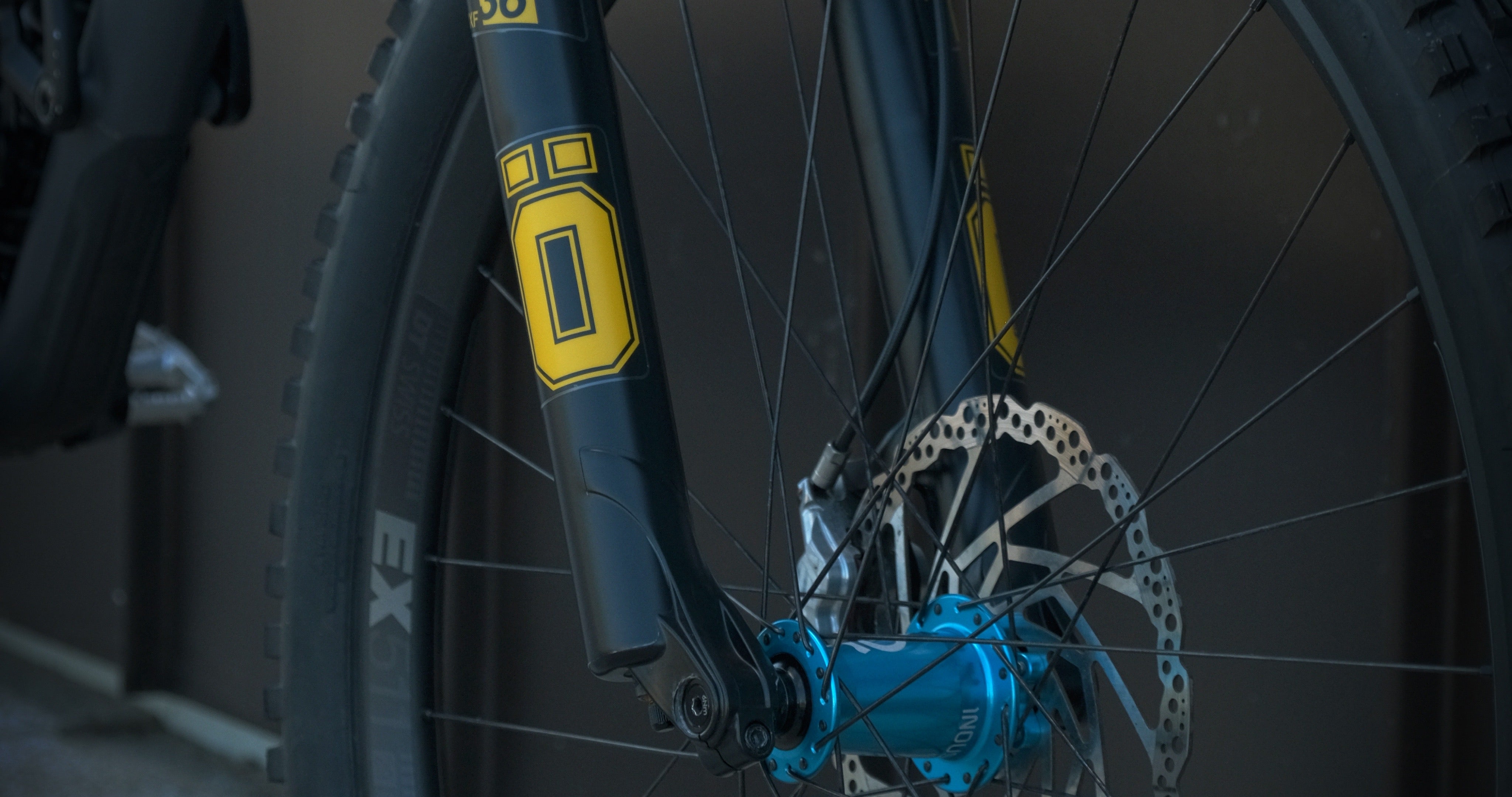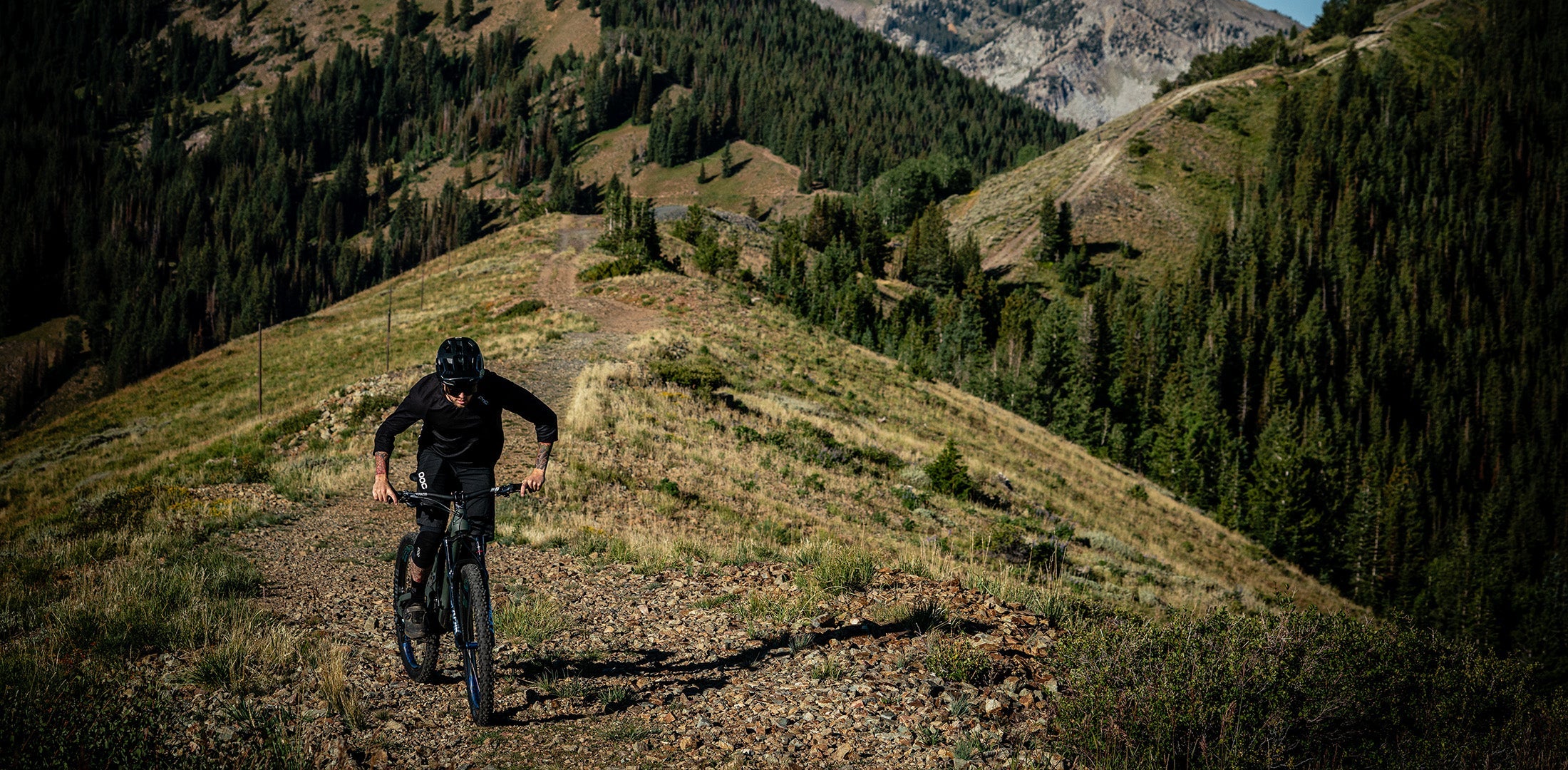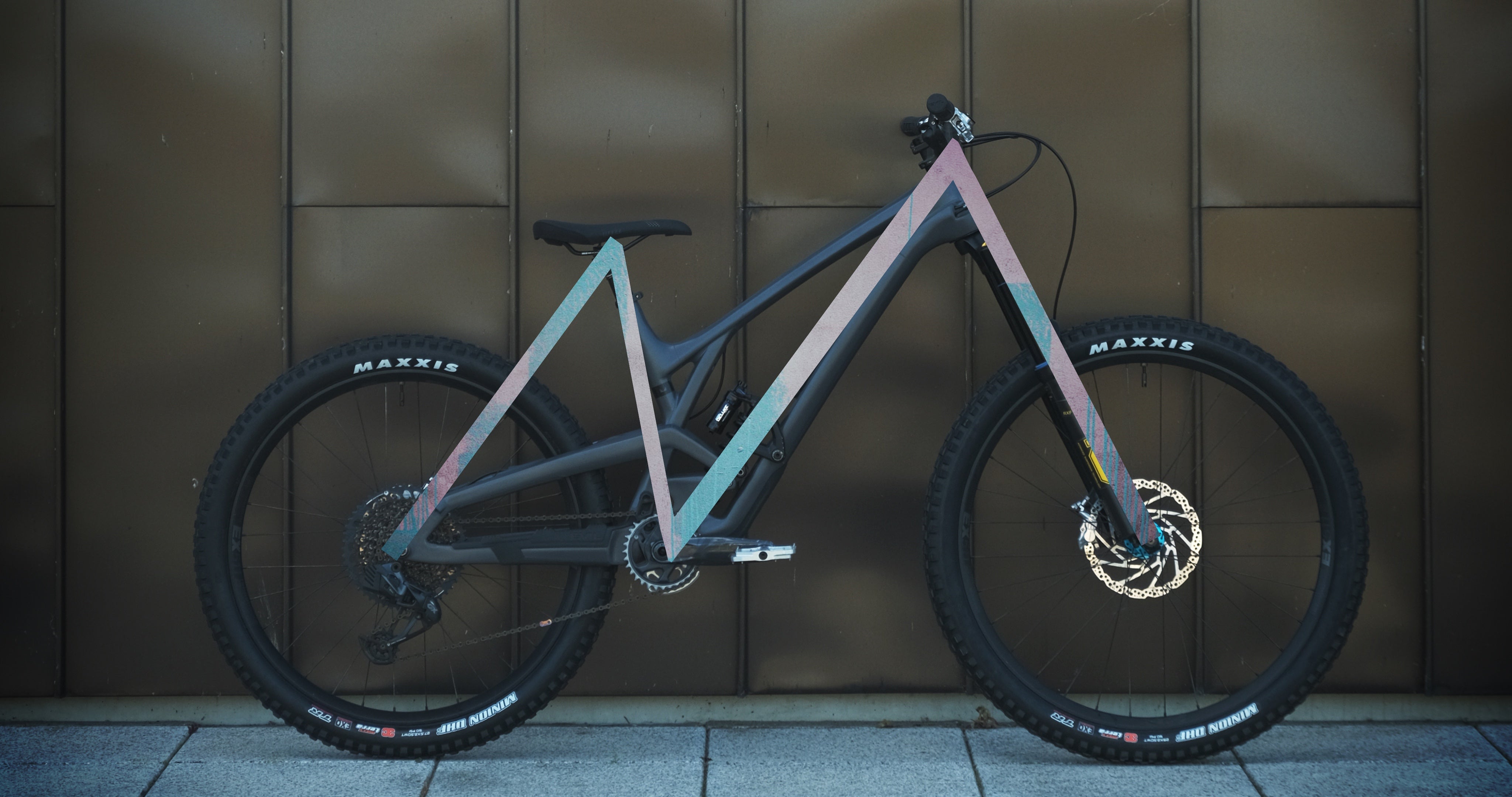Mountain Bike Geometry: A Comprehensive Guide
Introduction
Mountain biking is a demanding sport that requires precision and control.
One crucial aspect that significantly influences a rider's experience is the geometry of the mountain bike.
In this comprehensive guide, we'll delve into the intricacies of mountain bike geometry, exploring various key measurements that shape the bike's performance and handling and how they effect your real world riding.
What we covering:
- Reach
- Head Angle
- Effective Top Tube Length
- Wheelbase
- Seat Tube Length
- Actual Seat Angle
- Effective Seat Angle
- Stem Length
- Stack Height
- Bottom Bracket Height
- Bottom Bracket Drop
- Downtube Length
- Front Centre
- Rear Centre
- Fork Offset
- Ground Trail
- Mechanical Trail
- Sagged Geometry
- Dynamic Geometry
- Conclusion

Reach:
Reach is the horizontal distance from the bottom bracket to the center of the head tube. It dictates the bike's length when riding in a neutral position, influencing stability and maneuverability.
Importance: Determines the bike's length and the rider's position when out of the saddle.
Impact: Affects stability, maneuverability, and overall control on the trail.

Head Angle:
The head angle is the angle between a horizontal line and an imaginary line extending through the center of the head tube. It determines the bike's steering responsiveness and stability.
This is one of the figures that determines how 'slack' or 'steep' a bike is. The higher the number the steaper the angle, the lower the number the slacker the bike. So many cross country bikes will have a head angle between 66 - 72 degrees and would be considered steep, with downhill and enduro bikes ranging from 62 - 64 degrees which would be considered slack.
Importance: Determines steering responsiveness and stability.
Impact: Steeper angles provide quicker steering, while slacker angles enhance stability at high speeds.

Effective Top Tube Length:
The effective top tube length is the horizontal distance from the head tube to the seat tube. It influences the rider's reach and helps in determining the appropriate frame size for a comfortable riding posture.
Importance: Influences rider reach and helps determine the right frame size.
Impact: Affects rider's posture and comfort, ensuring an optimal position for control and efficiency.

Wheelbase:
Wheelbase is the total length from the front wheel's axle to the rear wheel's axle. It plays a significant role in determining stability at high speeds and maneuverability in tight corners.
Importance: Affects stability at high speeds and maneuverability.
Impact: Longer wheelbases provide stability, while shorter ones enhance agility in tight turns.

Seat Tube Length:
The seat tube length is a fundamental measurement that determines the rider's minimum and maximum saddle height. It plays a crucial role in achieving a comfortable riding position, ensuring an efficient pedal stroke and optimal power transfer.
Importance: Determines saddle height for an efficient pedaling position.
Impact: Proper saddle height enhances power transfer, comfort, and pedaling efficiency.

Actual Seat Angle:
The actual seat angle is the angle formed by the seat tube and an imaginary horizontal line. It influences the rider's seated position and pedaling efficiency.
Importance: Influences rider's seated position and pedaling efficiency.
Impact: Proper seat angles enhance comfort and power transfer during climbs.

Effective Seat Angle:
The effective seat angle is the angle from the horizontal axis through an imaginary line running through the bottom bracket up to the saddle set at riders height. Influencing seated climbing efficiency.
Importance: Considers actual saddle height position, affecting overall comfort and climbing efficiency.
Impact: Ensures a comfortable riding position during various trail conditions.

Stem Length:
Stem length influences the bike's handling by affecting the rider's reach and steering responsiveness.
Importance: Influences bike handling by affecting reach and steering responsiveness.
Impact: Proper stem length contributes to a balanced and responsive ride.

Stack Height:
Stack height refers to the vertical distance from the bottom bracket to the top of the head tube. It influences the rider's handlebar height, affecting the overall riding position and comfort.
Importance: Dictates handlebar height and overall riding position.
Impact: Proper stack height contributes to rider comfort, control, and aerodynamics.

Bottom Bracket Height:
Bottom bracket height is the vertical distance from the ground to the center of the bottom bracket. It affects the bike's center of gravity, pedal clearance, and overall stability.
Importance: Affects center of gravity, pedal clearance, and overall stability.
Impact: Higher bottom brackets offer better clearance, while lower ones improve stability.

Bottom Bracket Drop:
Bottom bracket drop is the vertical distance from the wheel axles to the bottom bracket. It influences the bike's stability, cornering ability, and pedal clearance.
Importance: Influences stability, cornering ability, and pedal clearance.
Impact: Drop affects the bike's handling characteristics and its suitability for different riding styles.

Downtube Length:
The downtube length is the distance from the head tube to the bottom bracket. It contributes to the overall frame stiffness and impacts the bike's handling characteristics.
Importance: Contributes to frame stiffness and impacts handling.
Impact: Influences the bike's stability, responsiveness, and control.

Front Centre:
Front centre is the measurement from the bottom bracket to the front wheel's axle. It affects weight distribution, stability, and steering responsiveness.
Importance: Affects weight distribution and steering responsiveness.
Impact: Plays a role in stability, especially during descents and technical sections.

Rear Centre:
Rear centre is the distance from the bottom bracket to the rear wheel's axle. It influences the bike's stability, traction, and maneuverability.
Importance: Influences stability, traction, and maneuverability.
Impact: Longer rear centers can enhance stability, while shorter ones improve maneuverability. If you like manuals and wheelies it's far easier with a shorter chainstay.

Fork Offset:
Fork offset, also known as rake, is the horizontal distance from the center of the fork to the steering axis. It plays a role in the bike's handling, affecting stability and maneuverability.
Importance: Affects the bike's handling, stability, and maneuverability.
Impact: Offset influences steering feel and responsiveness in various trail conditions.

Ground Trail:
Ground trail is the distance from the front wheel's contact point to an imaginary line extending through the steering axis. It influences the bike's stability and steering feel.
Importance: Influences stability and steering characteristics.
Impact: Proper ground trail ensures predictable and stable handling on different terrains.

Mechanical Trail:
Mechanical trail is a dynamic measurement that considers suspension compression and fork travel. It affects the bike's handling and responsiveness during varied terrain.
Importance: Dynamic measurement considering suspension compression.
Impact: Affects the bike's handling and responsiveness during varied terrain and suspension movement.

Sagged Geometry:
Sagged geometry refers to the bike's geometry when the suspension is compressed, affecting handling and comfort during descents.
Importance: Reflects the bike's geometry during suspension compression.
Impact: Affects handling and comfort during descents, providing insight into the bike's behavior on rough terrain.

Dynamic Geometry:
Dynamic geometry takes into account the rider's movements and weight shifts during various riding conditions, providing insights into the bike's performance in real-world scenarios.
Importance: Considers rider movements and weight shifts during riding.
Impact: Provides insights into the bike's real-world performance, ensuring optimal handling and comfort in various conditions.
Conclusion
Understanding mountain bike geometry is key to finding the perfect ride that suits your style and preferences. Each parameter plays a crucial role in shaping the bike's behavior on the trail. Whether you're a seasoned rider or a newcomer to the sport, being informed about these geometry aspects will empower you to make better-informed decisions when choosing your next bike. So, hit the trails with confidence, armed with the knowledge of how geometry effects your riding.
But please don't get too bogged down in these numbers, yes it's great you can compare a bikes geometry to understand fit. But in all honesty it is very hard to compare, as two bikes may have the same reach (which is what people tend to guage fittment on) but that doesn't take into consideration seated climbing. The reach on one bike may be perfect for you, but another bike with the same reach could be a bad fit due to seat angle, stack height, bar rise and sweep, stem length etc. If you do want to compare two different bikes I would recommend Geometry Geeks.
There are so many things to consider when looking at geometry, it becomes a minefield. The best option is to phisically ride the bike if that is possible.
Some people actually size down dependant on their style of riding. So this is another consideration. People who are into tricks, jibs and just generally throwing the bike around tend to downsize. While people favouring stability and downhill speed will tend to stick to their correct size.
There is no better guage of fit than to actually ride the bike.
MEET THE AUTHOR
GAVIN RICHARDSON
Some say Gavin invented the wheel. They are lying of course, but he does build a mean set.
Chief of Cykel House, aging rider and father of 3. Gavin has been riding the majority of his life in multiple different forms. He created Cykel House out of passion and enthusiasm for the sport which cannot be matched.
Always on the hunt for the best products and latest trends his finger is right on the pulse.
Interesting fact - Gavin won a handwriting competition at age 7. What a legend.
Likes - A well built berm, beer and raw sprouts
Dislikes - Stainburn woods, headset cable routing and lycra

Continue Reading

How to Clean Your Drivetrain: A Step-by-Step Guide for Bike Maintenance
Subscribe To Our Newsletter
The latest news, events and stories delivered right to your inbox



